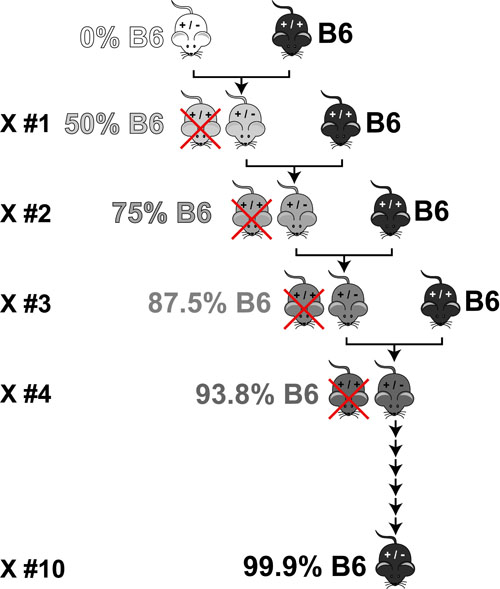Inbred mouse lines are used for most laboratory mouse work to make sure that all the mice have nearly identical genetic backgrounds (i.e. genetic code). These lines were originally generated by repeatedly mating mice with their siblings which minimized genetic variability and makes these mice as close to clones of each other as is practically possible.
Often mutant or knockout mice are generated in a “breed” of mouse whose genetic code are not well defined. To do experiments with these mice it is necessary to breed the mutation into a well defined inbred-mouse-line. This is called “back-crossing” and involved: serial breeding of heterozygous mutant offspring (see introductory post on mouse breeding) with mice from the inbred mouse line of interest (see figure above). In general, it takes >10 back-crossings to make sure that the mutant’s genes are >99.9% identical to other members of the inbred-mouse line.

This work by Eugene Douglass and Chad Miller is licensed under a Creative Commons Attribution-NonCommercial-ShareAlike 3.0 Unported License.

